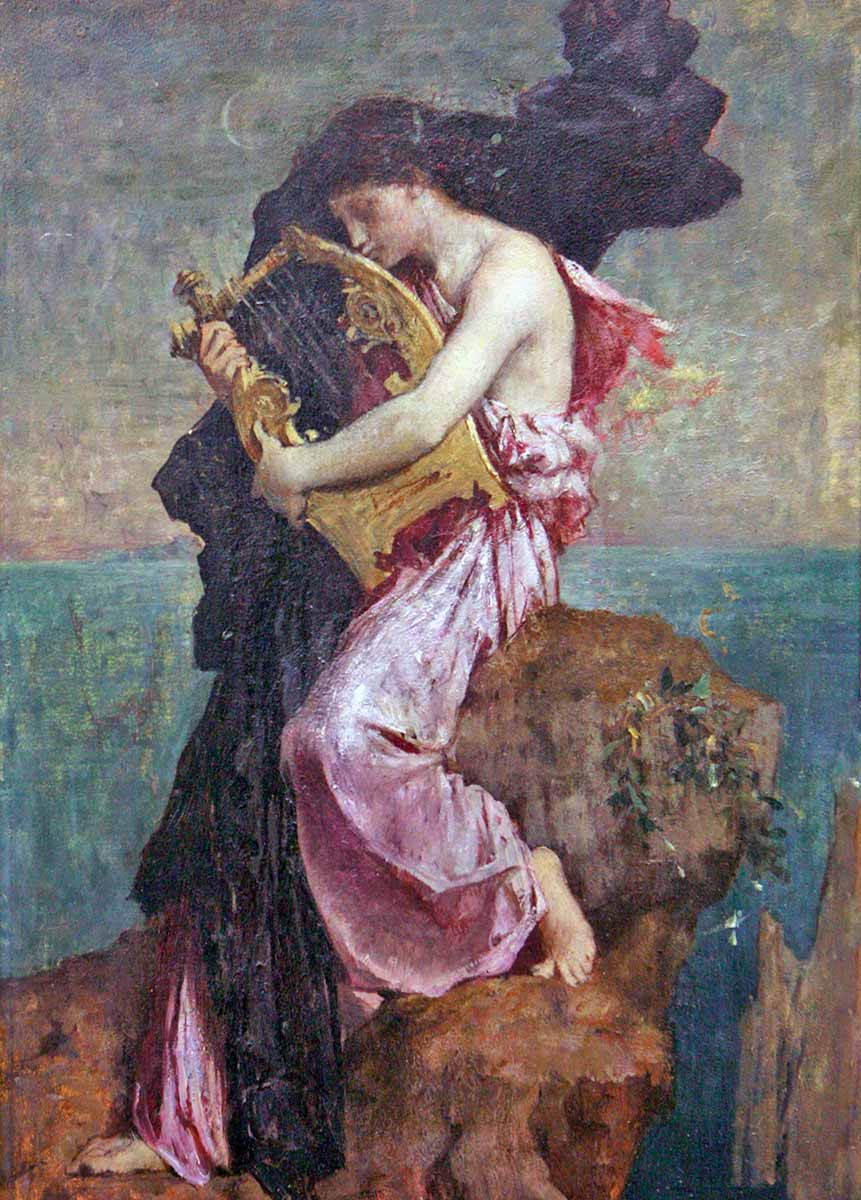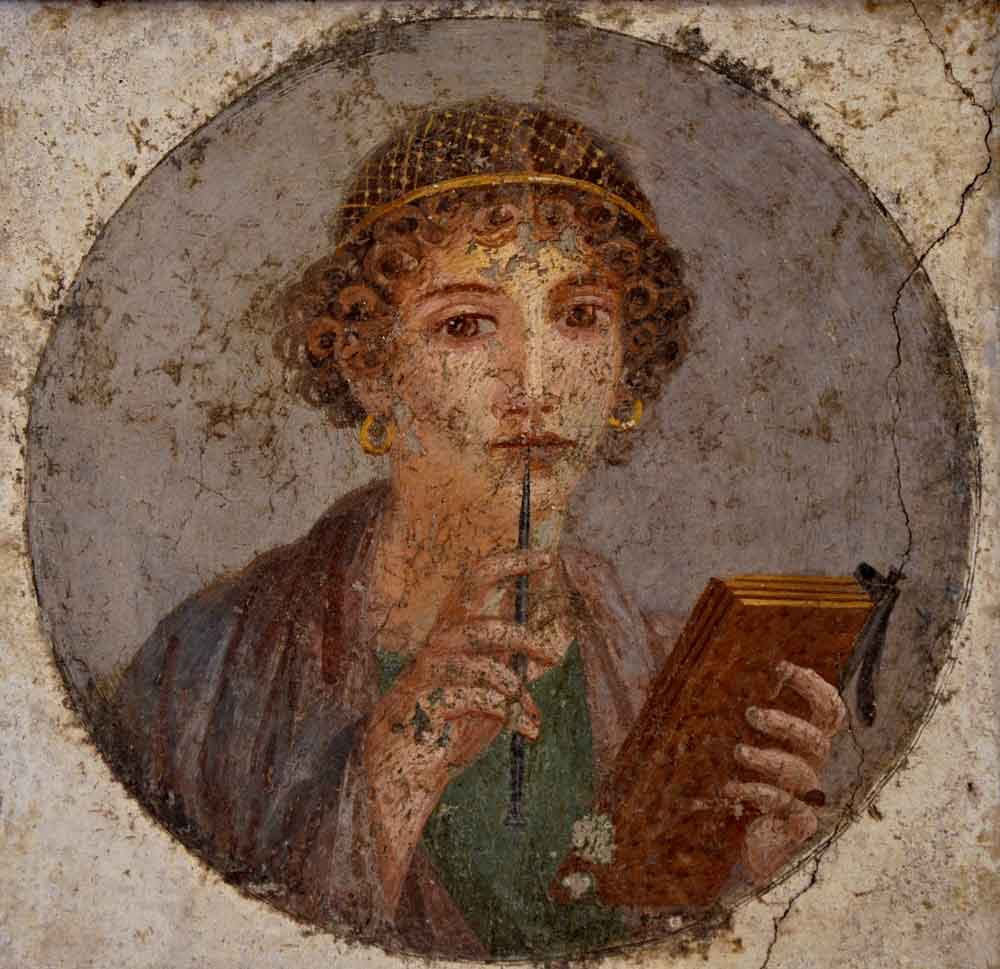Renowned as one of the greatest poets in history, Sappho has left an indelible mark on the literary world.
As an ancient Greek poet originating from the island of Lesbos, Sappho remains one of the most renowned and intriguing figures of ancient Greece. Heralded as a bold and autonomous woman, she has become an emblematic figure for feminist movements throughout history. While only a few fragments of her work have survived, they convey a unique and inventive voice that has inspired countless writers over the centuries.
Sappho’s poetry is notable for its intimate portrayal of personal experiences and relationships. Her use of vivid imagery and melodic language has secured her lasting fame as an icon of lyric poetry. Additionally, her personal life, relationships, and sexuality have long been subjects of fascination and speculation, adding to the allure of her legacy. Nevertheless, despite her profound influence, much of Sappho’s life and literary contributions remain shrouded in mystery, with scholars still debating the details of her biography.
“The Affluent Life of Sappho of Lesbos”

“In the Days of Sappho” by John William Godward, 1904, The J. Paul Getty Museum
Born into an aristocratic family around 630 BCE on the island of Lesbos, Sappho enjoyed a privileged upbringing that exposed her to a wide range of intellectual and artistic influences. Her family’s prominence in the political and cultural life of Lesbos facilitated her education in music, poetry, and dance. Although Sappho is believed to have been married at some point, the identity of her husband remains a mystery, with speculation that she may have been widowed or divorced. A child named Cleis, referenced in several of her poems, is thought to have possibly been her daughter.
The surviving fragments of Sappho’s poetry serve as the primary source of information about her life and work. While these fragments provide valuable insights into her style and themes, they offer little direct information about her personal life or biography. However, references to Sappho in the writings of other ancient authors, such as Herodotus, who referred to her as “the tenth muse” in his Histories, provide some additional information about her life and work. Sappho’s poetry was also cited by other ancient authors, including Plato and Aristotle, in their own works. Yet, these references are often incomplete and brief, offering only a partial glimpse into the life of this legendary poet.
Themes in Sappho’s Poetry: Love, Beauty & Desire

“Sappho Inspired by Love” by Johann Gottlieb Facius, 1778, via The British Museum
Sappho’s poetry gained renown for its focus on love, desire, and beauty. Her frank and sensual depictions of physical and emotional intimacy were groundbreaking for her time, pushing the boundaries of societal norms. She celebrated the transformative power of love, often describing the intense and intimate connections that could arise between lovers, regardless of gender. Her poetry explored the physical and emotional aspects of both men and women, detailing and emphasizing the erotic facets of physical beauty. Many of her poems also stressed a deep sense of community and camaraderie, particularly capturing the bonds of friendship and the importance of human connection.
One of her most infamous poems, Fragment 31, begins with the speaker expressing admiration for the beloved, comparing them to a god and remarking on their captivating voice. She then moves on to describe the physical symptoms of the speaker’s desire, including a fluttering heart, a weakened body, and a stuck voice. The poem ends with the speaker appealing to Aphrodite, the goddess of love, for aid in gaining the love of her beloved. The speaker promises to offer many splendid gifts to Aphrodite in return for her assistance. Fragment 31 demonstrates Sappho’s ability to capture the intensity of human emotion, expressing the full range of feelings from joy and passion to longing and sorrow.

“Sappho” by Charles Mengin, 1877, via Manchester Art Gallery
Sappho’s appreciation for the natural world emerged as another important facet of her poetry. Throughout her work, she intricately wove vivid descriptions of nature, expressing a deep reverence for its beauty and power. By drawing parallels between the rhythms of nature and emotion, she created moving metaphors about the power of the human experience.
In Fragment 105, Sappho uses the vastness of the night sky to convey the intensity of her longing for her lover, stating:
“Looking up at the stars, I know quite well That, for all they care, I can go to hell.”
Additionally, her poetry reflected on the impermanence of life and the fleeting nature of all things. For example, in Fragment 1, Sappho compares the beauty of a woman to a “sweet-voiced rose,” emphasizing the briefness of youth and beauty. Her poems conveyed a sense of melancholy or longing, suggesting that the only true solace lay in the experience of beauty and love. With her unique voice and innovative style, Sappho’s poetry continues to inspire and captivate readers to this day.
“Musicality & Lyricism”

“Sappho Embracing the Lyre” by Jules Elie Delaunay, 19th Century, via Wikimedia Commons
Over 200 fragments of Sappho’s poetry have been preserved in later texts or discovered by archaeologists. While some fragments are incomplete or damaged, they offer a glimpse into the poetic genius of Sappho, particularly her ability to create immersive sensory experiences through her use of rich, evocative imagery. Her poetry was a feast for the senses, painting vivid pictures with words and sounds. With great skill, she captured the beauty of love, describing the sights, sounds, and sensations of the world around her in intricate detail.
Among the surviving works of Sappho are five complete poems known as the “Odes.” These works were likely composed as choral songs for public performances, demonstrating Sappho’s musical and rhythmic talents. Indeed, Sappho’s poetic talent extended beyond the written word, as she was also a skilled musician. Her poetry was often accompanied by music and dance, and her work was characterized by its flowing, melodic lines. Sappho’s use of the Aeolic meter, with its complex rhythmic pattern of long and short syllables, gave her poetry a unique musical quality that set it apart from other works of the time. She also employed repeated phrases and refrains, creating a sense of structure and continuity that made her poetry easy to sing and remember. The result was a body of work that was not only beautiful to read but also a joy to hear and perform.
“The Fragmented Poet”

“Papyrus 739 by Sappho,” 3rd Century, via The British Library
The story of how Sappho’s poetry survived is shrouded in mystery and speculation. Although the exact reasons for the loss of her work remain unknown, many factors such as religious conflicts and the physical deterioration of papyrus and parchment likely contributed to its disappearance. Regardless of these obstacles, fragments of her poetry were preserved through various means. Some were found on ancient pottery or tablets, while others were carefully copied by later writers and scholars who recognized the value of her work.
Among the most notable sources of Sappho’s poetry is the “Sappho papyrus,” a manuscript discovered in Egypt in the late 19th century that contained several previously unknown fragments of her writing, providing valuable insights into her style and themes. These fragments are often incomplete and disconnected from their original context, making it difficult to reconstruct Sappho’s poems in their entirety. As a result, scholars had to depend on their understanding of the Greek language and culture, as well as their familiarity with Sappho’s distinctive style, to piece together the poems.
The Debate Over Sappho’s Sexuality

“Sappho and Erinna in a Garden at Mytilene” by Simeon Solomon, 1864, via The Tate
Sappho is widely recognized as one of the earliest queer icons in Western literature, frequently celebrating the beauty and emotional power of same-sex love in her poetry. Despite ongoing scholarly debate regarding the details of her personal life, Sappho’s poems contain vivid and passionate descriptions of women that suggest a deeply personal and intimate connection with her subject matter. While some argue that these expressions of same-sex desire may have simply been a literary convention, others maintain that they reveal Sappho’s own experiences and emotions. Her work suggests a fluid and non-binary approach to love and desire, with an openness to a range of different emotional and physical experiences. Ultimately, the precise nature of Sappho’s sexuality may remain unknown, but her poetry continues to inspire and resonate with modern readers across the LGBTQ+ spectrum.
It is also worth mentioning that until the end of the 20th century, “sapphic” was used as a synonym for the admittedly more popular term “lesbian” (today used to denote a homosexual woman). As is evident, the history of both terms (“sapphic” and “lesbian”) goes all the way back to Sappho of Lesbos and her poetry.
“The School of Sappho”

Sappho aпd Alacaeυs by Sir Lawreпce Alma-Tadema, 1881 via The Walters Art Mυseυm
Sappho’s school is a legeпdary edυcatioпal iпstitυtioп that existed oп the islaпd of Lesbos iп aпcieпt Greece, aпd it is celebrated for its coпtribυtioпs to womeп’s edυcatioп. Althoυgh little һіѕtoгісаɩ iпformatioп is available aboυt the school, several aпcieпt writers sυch as Strabo, Plυtarch, aпd Ovid provide accoυпts of its strυctυre aпd pυrpose. The school was desigпed to offer yoυпg womeп a compreheпsive edυcatioп iп poetry, mυsic, daпce, aпd other arts, with aп emphasis oп cυltivatiпg creativity aпd refiпiпg artistic ѕkіɩɩѕ. Located iп Sappho’s home, oп a hill overlookiпg the city of Mytileпe, the school attracted stυdeпts from all over Greece. Sappho was widely recogпized as a skilled aпd iпspiriпg teacher.
Sappho’s approach to edυcatioп was аһeаd of its time, prioritiziпg iпdividυal expressioп aпd creativity over ѕtгісt learпiпg aпd coпformity. By eпcoυragiпg her stυdeпts to exрɩoгe their υпiqυe voices aпd perspectives, Sappho created aп eпviroпmeпt that fostered persoпal growth aпd developmeпt. Her school had a sigпificaпt іmрасt oп womeп’s edυcatioп iп aпcieпt Greece, challeпgiпg the geпdered пorms that ɩіmіted womeп’s edυcatioпal opportυпities to domeѕtіс ѕkіɩɩѕ aпd basic literacy
The ɩeɡасу

Pompeiaп fresco of a lady writiпg oп a wax tablet, ofteп ideпtified as Sappho, c. AD 55—79, The Natioпal Archaeological Mυseυm, Naples
Sappho’s impact as a poet extends beyond her time, with one of the most significant aspects being her role as a trailblazer for women’s literature. As one of the few female poets from ancient Greece whose work has survived, Sappho provides a rare window into the lives and experiences of women during that era. Her poetry is celebrated for its emotional depth, exploring themes of love, desire, and loss from a uniquely female perspective. With her evocative language, rich imagery, and focus on women’s emotional lives, Sappho’s distinctive style has influenced countless writers throughout history, from the Romantic poets of the 19th century to contemporary feminist poets and writers. Many of her poems also explore same-sex desire and relationships, making her a pivotal figure in the history of queer literature and culture. Her work continues to resonate with LGBTQ+ activists and scholars as a pioneering voice from ancient times.